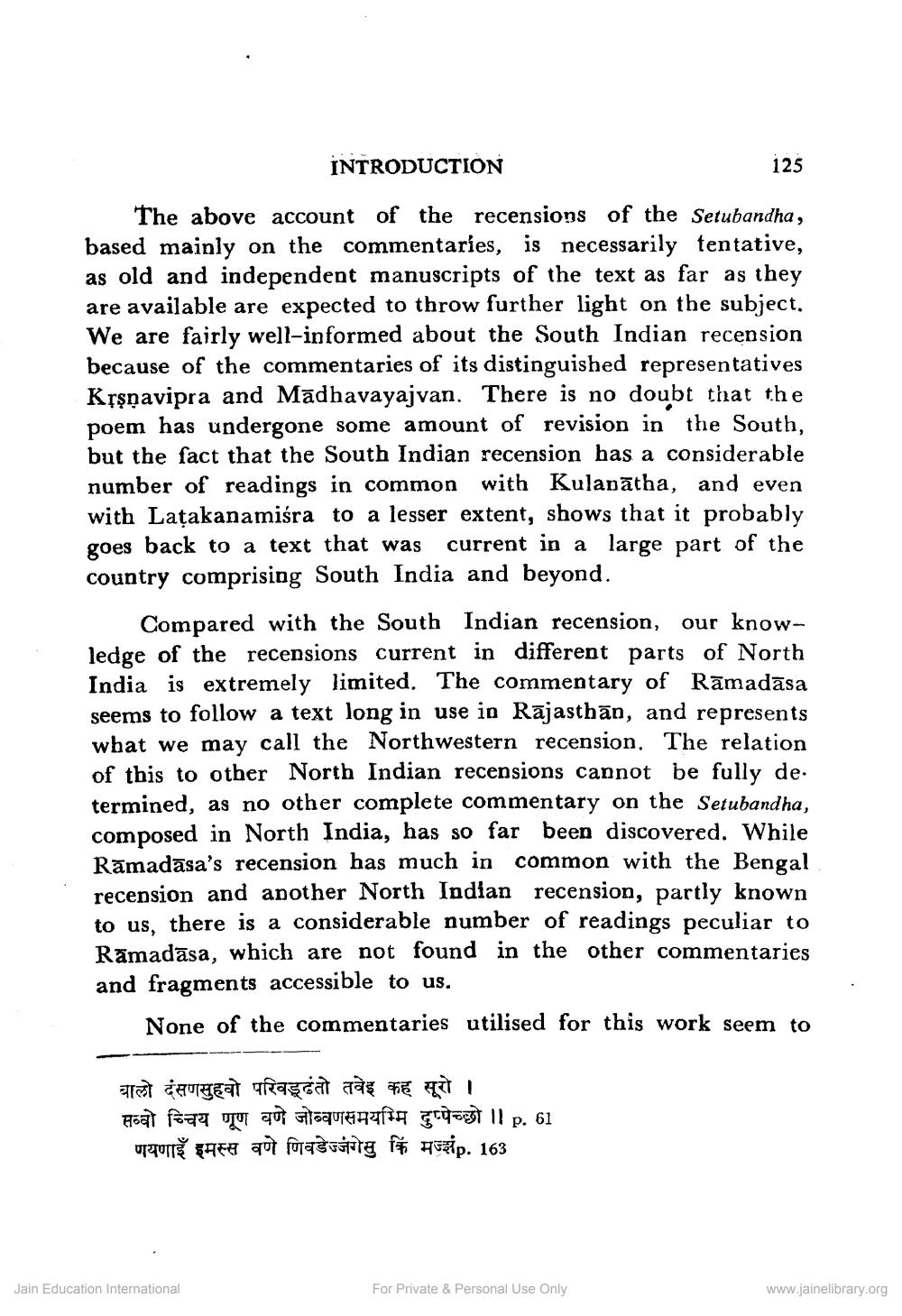________________
INTRODUCTION
125
The above account of the recensions of the Setubandha, based mainly on the commentaries, is necessarily tentative, as old and independent manuscripts of the text as far as they are available are expected to throw further light on the subject. We are fairly well-informed about the South Indian recension because of the commentaries of its distinguished representatives Kțşpavipra and Mādhavayajvan. There is no doubt that the poem has undergone some amount of revision in the South, but the fact that the South Indian recension has a considerable number of readings in common with Kulanātha, and even with Laţakanamiśra to a lesser extent, shows that it probably goes back to a text that was current in a large part of the country comprising South India and beyond.
Compared with the South Indian recension, our knowledge of the recensions current in different parts of North India is extremely limited. The commentary of Rāmadāsa seems to follow a text long in use in Rājasthān, and represents what we may call the Northwestern recension. The relation of this to other North Indian recensions cannot be fully de. termined, as no other complete commentary on the Setubandha, composed in North India, has so far been discovered. While Rāmadasa's recension has much in common with the Bengal recension and another North Indian recension, partly known to us, there is a considerable number of readings peculiar to Rāmadāsa, which are not found in the other commentaries and fragments accessible to us.
None of the commentaries utilised for this work seem to
बालो दंसणसुहवो परिवड्दतो तवेइ कह सूरो । Haal lezza u au Fleque fH Frost 11 p. 61 णयणाइँ इमस्स वणे णिवडेज्जंगेसु किं मझp. 163
Jain Education International
For Private & Personal Use Only
www.jainelibrary.org




